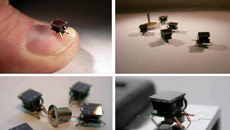Using the ‘empty’ space between stars and galaxies that is made up of sparsely spread charged particles as a giant lens, researchers have made a measurement of a distant rotating neutron star that is believed to be the most precise till now.
The new measurement is one million times more precise than the previous world’s best.
Neutron stars were particularly interesting objects to study, as some of them - called pulsars - gave off pulsed radio waves whose beams swept across telescopes at regular intervals.
The researchers were able to use the interstellar medium, the ‘empty’ space between stars and galaxies as a giant lens to magnify and look closely at the radio wave emission from the pulsar 'B0834+06r'.
This technique yielded the highest resolution measurement ever achieved, equivalent to being able to see the double-helix structure of our genes from the Moon!
“Compared to other objects in space, neutron stars are tiny - only tens of kilometres in diameter - so we need extremely high resolution to observe them and understand their physics,” said Jean-Pierre Macquart from Curtin University in Australia.
“More than 45 years since astronomers discovered pulsars, we still do not understand the mechanism by which they emit radio wave pulses,” he noted.
The researchers found they could use the distortions of these pulse signals as they passed through the turbulent interstellar medium to reconstruct a close in view of the pulsar from thousands of individual sub-images of the pulsar.
The previous record using combined views from many telescopes was an angular resolution of 50 microarcseconds.
But the ‘interstellar lens’ can get down to 50 picoarcseconds, or a million times more detail, resolving areas of less than 5km in the emission region, the researchers showed.
“Our new method can take this technology to the next level and finally get to the bottom of some hotly debated theories about pulsar emission,” said Ue-Li Pen of the Canadian Institute of Theoretical Astrophysics.





